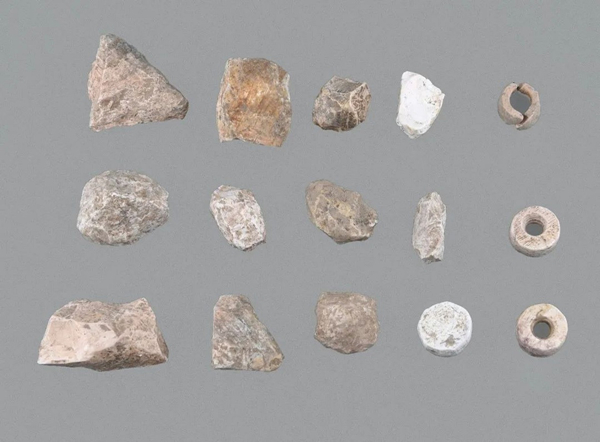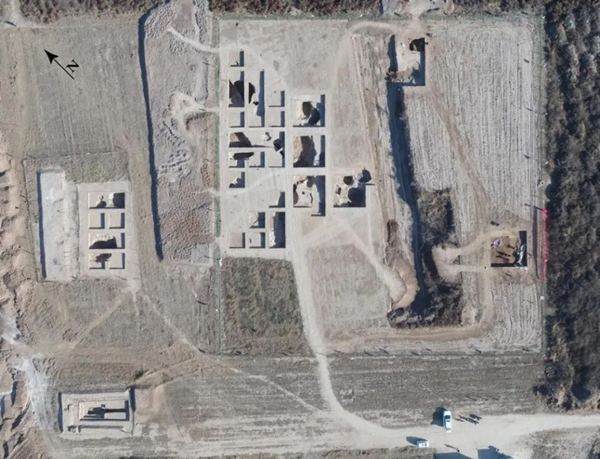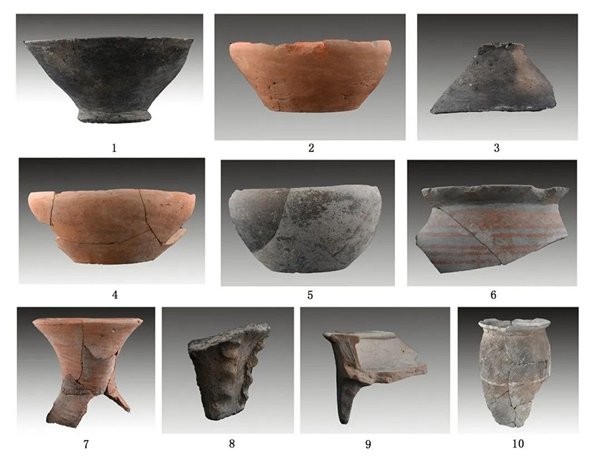Relics from Shanxi help explain human patterns
Updated: 2023-02-16

Relics unearthed at a Neolithic site dating to about 5,000 years ago in Yuncheng, Shanxi province. [Photo provided to chinadaily.com.cn]
The Shanxi Institute of Cultural Relics and Archaeology published new archaeological excavation information on Monday. Archaeologists from the institute had discovered a 5,000-year-old Neolithic site in Yuncheng, Shanxi province.
The Yuancun site is close to Salt Lake, and the massive salt resources are closely related to the formation and development of the site. The site has been of great value in exploring the origins of civilization and the control and use of resources in the development of early societies, according to the institute.

An aerial photo shows the Neolithic site in Yuncheng, Shanxi province. [Photo provided to chinadaily.com.cn]
The site, with an area of about 1.1 million square meters, is believed to be a settlement site from the Neolithic Age, the Xia Dynasty (c. 21st century-16th century BC) and the Shang Dynasty (c. 16th century-11th century BC).
From 2006 to 2022, a joint archaeological team composed of National Museum of China, the Shanxi Institute of Cultural Relics and Archaeology and Jilin University conducted archaeological work in Yuancun village and surrounding areas.

Relics unearthed at a Neolithic site dating to about 5,000 years ago in Yuncheng, Shanxi province. [Photo provided to chinadaily.com.cn]
Since July 2022, archaeologists have unearthed 58 ash pits, four housing sites, three pottery kilns, a tomb from the Han Dynasty (206 BC-AD 220) and a tomb from the Ming (1368-1644) and Qing (1644-1911) dynasties with a large number of relics, including pottery, bone ware, jade tools and animal bones.
"The new discoveries enrich the cultural connotation of the Yuancun site," said Wang Xiaoyi, director of the institute and head of the archaeological excavation team. "It is also of great significance for exploring the ancient cultural features and the evolution of settlement forms in the region."



